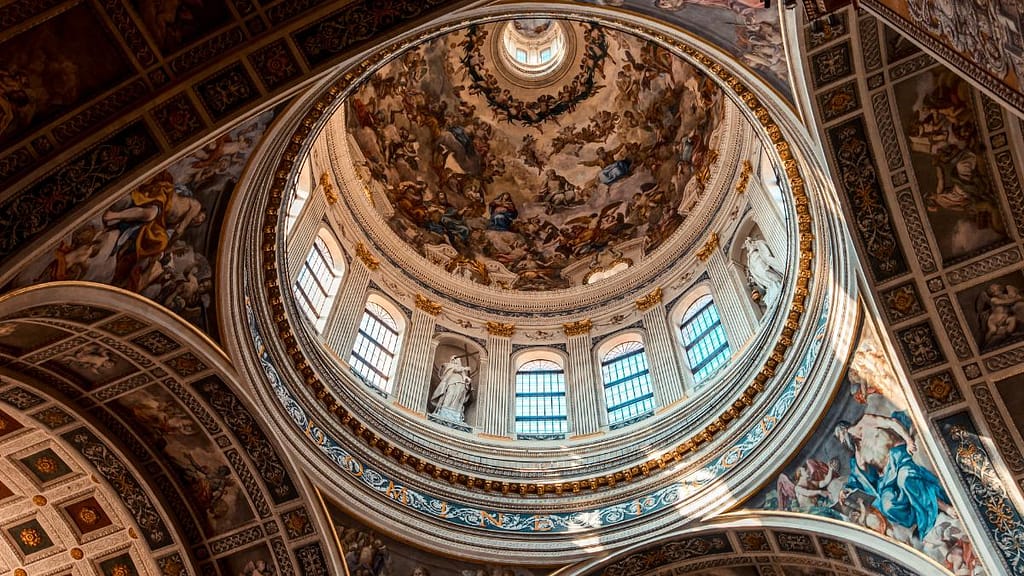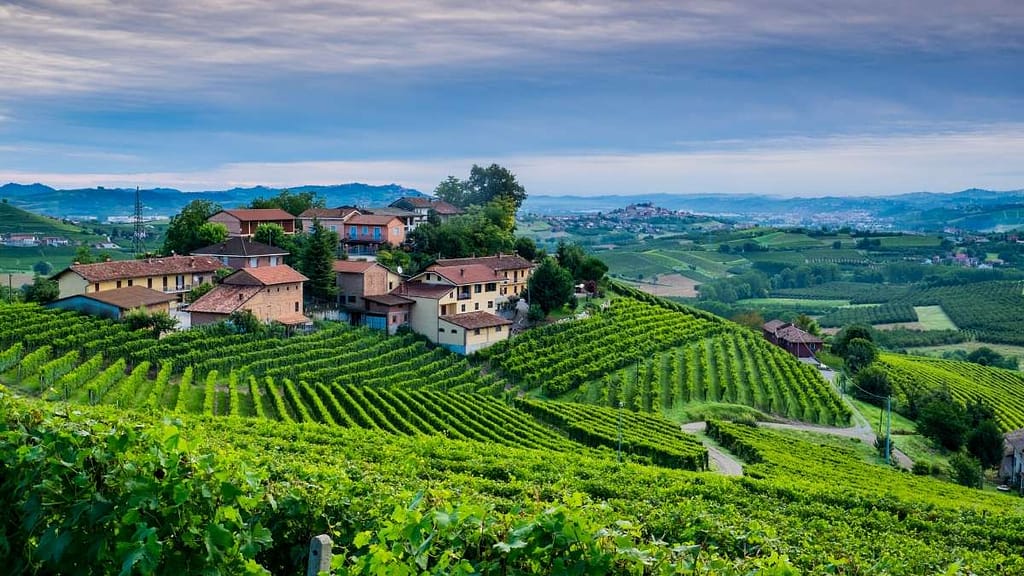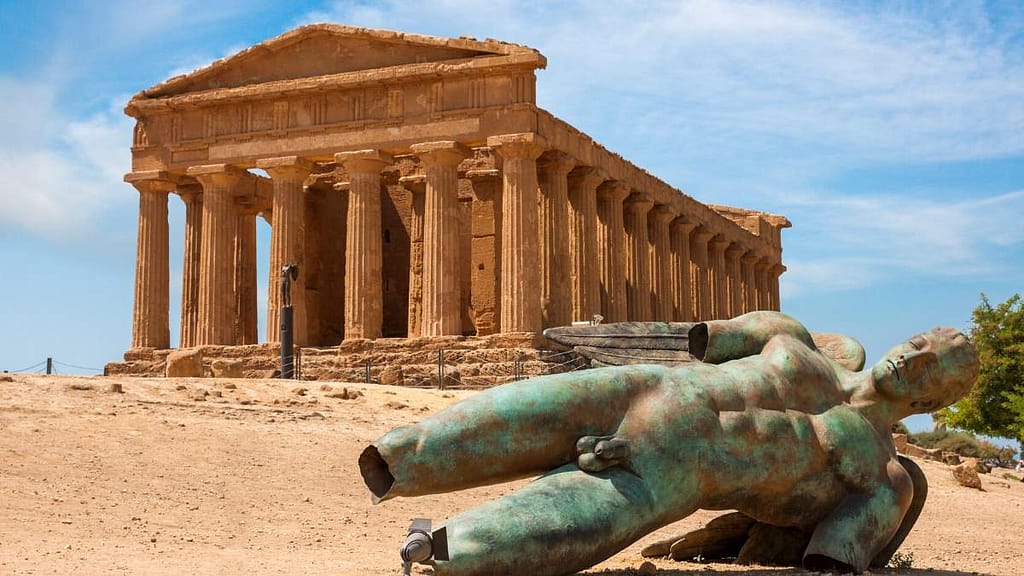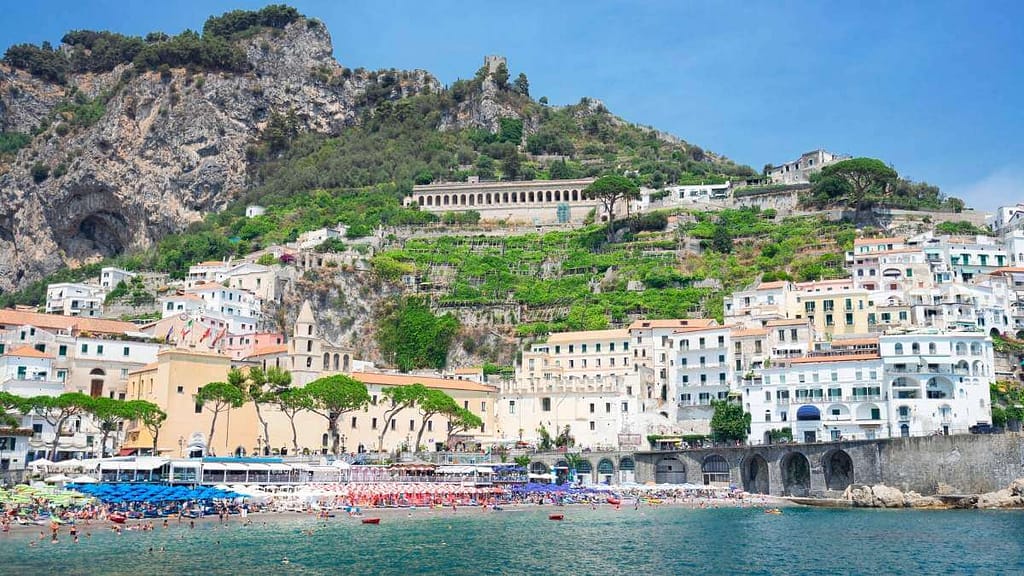It’s not a secret that Italy is filled with many stunning places, from small towns to big cities and everything in between. Most tourists set their eyes on more popular destinations like Florence, Rome, Venice or Milan, while there are many other places to explore. For a taste of the Italian Renaissance, stunning architecture and fewer crowds, head to Mantova, a historical gem you have probably never heard of.
The often overlooked by tourists Mantova (also Mantua, Italy) sits pretty in the Lombardy region’s southeastern corner, bordering Emilia-Romagna and the Veneto. Within a short distance from Milan, Venice and Verona, Mantova flies under the radar of most people visiting this part of Italy.
This post may contain compensated links. Find out more info in our DISCLAIMER.
There are many things to do in Mantova, Italy, especially for history and culture lovers. Mantova and the nearby Sabbioneta were declared a UNESCO World Heritage Site in 2008. In 2016, Mantova was named the Italian Capital of Culture. But the accolades don’t stop there. In 2017, it was named the European Capital of Gastronomy, included in the Eastern Lombardy District (together with Bergamo, Brescia and Cremona). So whether you’re into art, food or both, this is the place for you.
Is Mantua worth visiting? Absolutely.
If you like visiting places filled with culture and history, Mantova checks all the boxes. While few people might know of Mantova today, the city has made its mark in music and plays. It is often associated with the famous Roman poet Virgil (Publius Vergilius Maro), born nearby in 70 B.C. Today, you can visit a statue dedicated to him in the garden of Piazza Virgiliana.
Shakespeare fans might recognize Mantova as the place where Romeo was banished in Romeo and Juliet and one of the settings in The Two Gentlemen of Verona. The House of Gonzaga also inspired Act 3, scene 2 of Hamlet, where a play-within-the-play occurs, called The Murder of Gonzago (or The Mousetrap).
The city has also played a significant role in the history of the opera. While this musical entertainment style originated in nearby Florence, it quickly spread to Mantova thanks to the Gonzaga family’s patronage. It is here that the composer Claudio Monteverdi premiered his opera L’Orfeo in 1607.
Just over a century later, in 1770, the 14-year-old prodigy Wolfgang Amadeus Mozart held a performance at the spectacular Teatro Bibiena. The theatre, commissioned by the Empress Maria Theresa of Austria, was inaugurated in 1769. It is a Baroque masterpiece designed by Antonio Galli Bibiena. You can visit the theatre inside or attend a performance.

If you’re into shows about Italy or just those set here, you might be familiar with Mantova from the Netflix show The Trial (Il processo in Italian). The city plays its own role here as the silent yet beautiful background to the story. As you follow the characters looking for the truth, you’ll get a closer look at the modern and historical sites of the city.
Meet the Gonzaga family
Like other ruling families of the time, the Gonzagas came to power by overthrowing the competition and ruled Mantova for almost four centuries. The family produced 12 cardinals, 14 bishops and one saint. Under their patronage, Mantova developed as an artistic and cultural hub of the Renaissance.
While the Gonzaga family ruled with an iron fist, they also invested in stamping their mark on architecture all around the city. From opulent palaces and churches to hydrological engineering projects as well as urban and architectural works. They employed the greatest artists of the time to create stunning works and some of the finest Renaissance buildings in the city.

One of the influential Gonzaga family members was Isabella d’Este. Born to Ferrara’s noble family, Isabella and her sister received the same education as their brothers. This included studying Latin and Greek as well as Roman history, music, astrology and dancing. She married Francesco Gonzaga, the Marquis of Mantova, in 1490.
Isabella became known as the patron of the Renaissance. She was a supporter of literature, art and artists like Raphael, Michelangelo and da Vinci. Over her lifetime, she collected numerous artworks and left behind over 2,000 letters that provided insight into life during the Renaissance. Isabella was also a fashion icon whose style was copied by other noblewomen of Europe. She died in 1539 at the age of 64.
Things to do in Mantova, Italy
With a population of around 50,000, Mantova is a small city that packs a lot of punch. It is surrounded by three artificial lakes created in the 12th century as a defence system. The water that fills the lakes – Lago Superiore, Lago di Mezzo and Lago Inferiore – comes from the Mincio River, a branch of the Po River that descends from Lake Garda. This makes the city look like an island, one of many illusions you can find here.
You’ll find that navigating the city is very easy. There are three important piazzas – Piazza Sordello, Piazza del Broletto and Piazza dell’Erbe – where you’ll find the most important monuments, buildings and churches. On Thursdays, there is a large market that takes place here. Each piazza has its own charm and is a great spot for people-watching, grabbing a bite or simply enjoying a break from sightseeing. Here are our pics for what things to do in Mantova even on a short break.
Palazzo Ducale
The Palazzo Ducale (Ducal Palace) in the historic centre was the primary residence of the Bonacolsi family and then the Gonzagas when they took over in 1328. With over 1,000 rooms spread across buildings connected through corridors, galleries and gardens, the palazzo covers 35,000 m2 (376, 737 sq. ft.).
When visiting the Palazzo Ducale, make sure to look up and around. The palazzo is decorated with Gothic frescoes by Pisanello and mesmerizing paintings by the famous Andrea Mantegna. There are also numerous Baroque paintings by Pieter Paul Rubens, tapestries and artworks.

The palazzo complex is divided into separate sections. The Corte Vecchia (Old Court) was the original residence of Mantova’s rulers, including two medieval buildings. Here you’ll find the Baroque-style Gallery of Mirrors and the Hall of Rivers, opulent apartments, gardens and a chapel.

The Corte Nuova (New Court) was added between the 15th and the early 16th centuries. It underwent several renovations and expansions by various architects. It housed the private apartments of the Duke of Mantova. Here you’ll find the galleries of the family’s art collections, courtyard and gardens.
The Domus Nova palace was added in the second half of the 15th century, and the Basilica Palatina di Santa Barbara (Church of St. Barbara) was added during the 16th century. Worth checking out is the 16th-century Sala dello Zodiaco ceiling by Lorenzo Costa the Younger and the Sala di Troia (Trojan Room) in the Corte Nuova painted by Giulio Romano between 1536 and 1539.
Castel San Giorgio
The Castel San Giorgio originated as a medieval fortress. It was then converted into a residence by Ludovico I Gonzaga in the 15th century. The castle is part of the Palazzo Ducale complex and was built on an old church’s remains. The castle features four corner towers and a massive moat with draw bridges that surround the outer walls. All the Renaissance details are reminiscent of Florence.
Inside, you can admire the beautiful spiral staircase of the Horses and the Sala degli Affreschi, where the Gonzaga library used to be. Don’t miss the Camera degli Sposi (Bridal Chamber), also known as Camera Picta. It was dedicated to Ludovico II Gonzaga and his wife Barbara of Brandenburg and is decorated with frescoes by the talented Andrea Mantegna.

You will find additional collections of art and tapestries in the Sala degli Stemmi. You can visit the Castelo and the Palazzo Ducale with one single ticket. Outside the castle, make sure to check out the San Giorgio bridge that dates to 1198. You’ll get great views of the city with the Castel San Giorgio and the Palazzo Ducale reflecting in the water, which can be quite charming at sunset or sunrise.
Palazzo Te
For a taste of the Gonzaga rulers’ opulent tastes, head to Palazzo Te, commissioned by Frederick II Gonzaga. Originally located outside the city wall, the palace embodied the il dolce far niente (the sweetness of doing nothing) ideology. Frederic entertained here and hung out with his mistress.



It took the Italian painter and architect Giulio Romano 10 years to complete the palace (1525-1535). He worked with other notable artists of the time, including Gian Francesco Penni, Francesco Primaticcio, Benedetto Pagni and Rinaldo Mantovano, to name a few.
Palazzo della Ragione and Torre dell’Orologio (Clock Tower)
Head over to the Piazza delle Erbe for a little throwback to the past. Here you’ll find the Palazzo della Regione which dates back to 1250. It was used as the seat of administration and justice during the Middle Ages. During the 15th century, a portico and a clock tower (Torre dell’Orologio) were added to the palazzo.
The clock was one of the first mechanical clocks in Europe. In addition to time, it tracked lunar phases, positions of the sun, moon, planets, zodiac signs and the celestial equator. Today you can visit the tower for great views of the city.


Here you’ll also find the oldest church in the city called the Rotonda di San Lorenzo. Commissioned by Matilde of Canossa in 1082, it was dedicated to St. Lawrence. It’s a fine example of Romanesque architecture and interior decorations dating back to the Byzantine period. At one point, houses covered up the church until it was rediscovered in 1908 and restored.

Cattedrale di San Pietro (Duomo di Mantova)
The Duomo di Mantova, also known as Cattedrale di San Pietro (St. Peter’s Cathedral), is an eclectic mix of styles. The site was once occupied by a different building that burnt down in 894. The church we see today was rebuilt between 1395 and 1401. Gothic towers were added to the Romanesque bell towers, and a Neoclassical façade was added during the 17th century.

Basilica di Sant’Andrea
Ludovico II Gonzaga commissioned the Basilica di Sant’Andrea in 1472. It sits on the site of an older church going back to 1046. Leon Battista Alberti was tasked with the current church’s design, rumoured to be the resting place of a vessel holding earth soaked in Christ’s blood. The vessel is hidden behind the altar and taken out during special religious events.

The church has one central aisle and is free from pillars. It’s decorated with gilded ceilings, frescos and pained columns that look like carved stone. Here you’ll also find the tomb of Andrea Mantegna, the man responsible for the impressive artworks at Palazzo Ducale.
Mantua travel guide basics
Mantova is a lovely city and a perfect destination for architecture, history and culture lovers. It’s a place filled with wonderful treasures, waiting to be rediscovered by new generations. Due to its central location, Mantova is accessible from other larger cities and can be a great day trip idea. However, if you want to explore and enjoy the city a bit more, you might consider staying here for a few days. After all, there is enough here to keep you dazzled at every corner.
As this is Italy, the food here is also something you should experience. For a taste of local flavours, try the bigoli con sardelle, a fresh pasta similar to spaghetti paired with anchovies or sardines, garlic and oil. You might also want to try the tortelli di zucca alla Mantovana, tortelli made of fresh egg pasta and filled with pumpkin, Parmesan cheese and nutmeg. The dish is often topped with oil or butter and sage.
If pasta is not your thing, you might want to try the risotto alla pilota, a grainier than typical Italian risotto topped with sausage, pork and Parmesan cheese. You can top off your meal with some local deserts. Try the torta sbrisolona, a crumbly cake made with flour, butter, eggs, almonds, lemon peel and vanilla seed. Or the Elvezia cake, made from three circular layers of egg white, sugar and almond paste.
If you haven’t heard of Mantova before, you should definitely add it to your next Italian itinerary. Not only will you discover a gem overlooked by others, but you’ll also have great memories to bring home with you.
You might also enjoy: Origins of Italian cuisine






